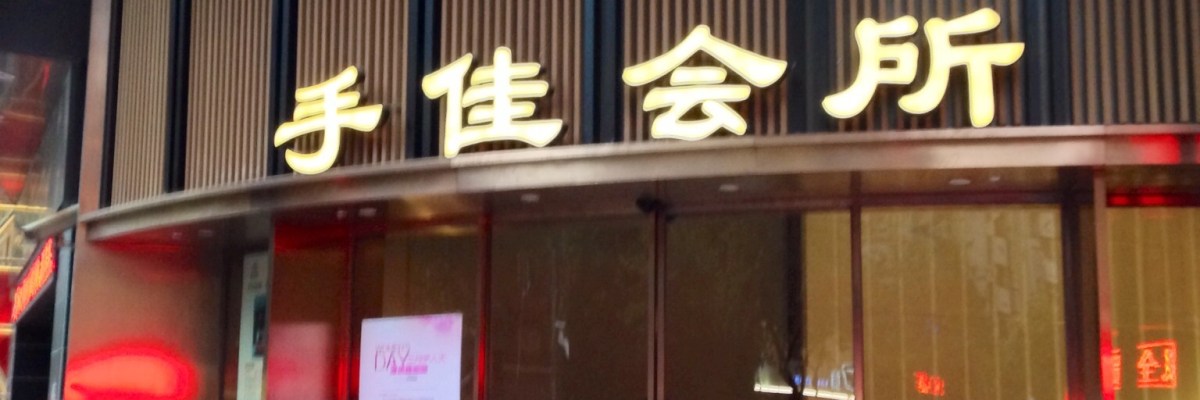Not all airline lounges are created equal. Most provide the basic of offering comfortable seating, flat screen television, free wifi and snacks. While a few airline lounges are unfortunately — for lack of a better term — lame, some however have taken the extra step of creating well thought out spaces by ingenious interior designers to indulge their premium flyers. These appealing lounges come complete with full bars (including sake bars!), made-to-order noodle stations in Asia (more than your cold sandwiches and peanuts) and private shower rooms with well-stocked toiletries. The competition for in-flight comfort and amenities has definitely expanded to the ground!
Category: Xiamen
Foot Massage
One common indulgence in Asia is going for a foot massage. There are numerous places offering this service – from a simple common room with several lounge chairs, to high-end luxury spa establishments offering air-conditioned private rooms that can accommodate an individual or a group, complete with an in suite washroom and television. One recently-opened spa in Xiamen is the Bokent Health Club on Hexiang West 2nd Road. A 90-minute foot massage costs 168RMB or $27 – and this includes a lunch or dinner buffet! The service starts off with a hot foot bath with herbs in a wood-lined pail for…
Huānyíng huílái
“Welcome back” to Xiamen! Ranked as the most attractive city in the Fujian province of southern China, many of Xiamen’s old colonial buildings have been carefully restored and its lively waterfront area give it an alluring old-world charm — together with many new modern buildings rising throughout the city. PS : I had a difficult time accessing my blog while in China. Seems like blogging is restricted. The Nanputuo Buddhist Temple is famous in the province and is a pilgrimage site for many in Southeast Asia. The temple has been repeatedly destroyed and rebuilt, with the latest reincarnation from the early…
I Spy
Tea houses are dime a dozen in China. From simple street front locations to fancy modern ones in shopping malls. There are multiple tea varieties being offered and it is not uncommon for a type of tea to run into a couple hundred, or even in the thousands, of dollars for 50 grams. That being said, it appears that the cafe culture has taken hold, though not as extensive as the tea houses — yet. There are the local independents, and of course, Starbucks has arrived. As expected, the younger generation (though not exclusively) seem to prefer coffee shops. Speaking…
Zi Ying
Zi Ying is a small sea-side village located 150 kms east of Xiamen in the Province of Fujian. This is my grandfather’s hometown where his house still stands. During my first trip here in the late 1980’s, it was surrounded by dirt road and very few homes, which all needed major repairs. Today, all roads in the village are paved and the direct view of the sea from the house is a little obstructed with both new and renovated houses. The house was originally built in 1934 and an annex was added in the following years. During the Cultural Revolution…
Gulang Yu
The tiny islet of Gulang Yu across Xiamen Island was one of the first five treaty ports opened to foreign trade and residents after the Opium War in 1843. As one of the “concessions” in 1852, the island was set aside for foreign residence and then parcelled out to the British. This vehicle-free 1.7 sq-km island is full of European-style mansions overgrown with brilliant bougainvillea that were owned by consulates, foreigners and wealthy Chinese returning from overseas. Many are still owned by the families of overseas Chinese. The Catholic Church at Gulang Yu was built in 1917 and is still…
Xiamen
Located in Fujian province in the southeastern coast of China, the island of Xiamen (otherwise known by its Fujian name of Amoy) made it to Trip Advisor’s Traveller’s Choice Destination for 2012. In 1387, the Ming Dynasty built a fort in Xiamen to guard against pirates. In the 1540’s, European traders first visited Xiamen as it was China’s main port for exporting tea. Xiamen became a foreign concession in 1903 as part of the “Treaty of Nanking”. Much of the island has prospered together with the other major cities of China when it was designated a Special Economic Zone in…

